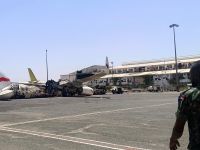The Iranian army announced Saturday that it had successfully tested its Shahab-3 surface-to-surface missile for the second time.
"The defensive Shahab-3 missile was fired Saturday for the second time, in order to verify its compliance with international standards," Radio Tehran quoted an official of the Iranian ministry of Defense as saying.
With a 1,300 km (800-mile) range, the Shahab-3, is capable of hitting most countries in the region including Israel. It was first tested in July 1998.
"The test is part of the Iranian defense industry's program and does not, in any way, pose a threat to other countries," said the unidentified official.
"Its objective is to reinforce the defensive capacity of the country in the framework of the principle of prevention," he said without specifying the location of the test.
Iran's missile program, which is rapidly expanding has caused worry in the United States and particularly Israel, which is considered by Iran to be its number one enemy in the region.
In February 1999, the Iranian army announced that the engine of a new version of the Shahab-3 (dubbed Shahab-4) had to be tested. This new missile will transport a satellite, Iranian Defense Minster Ali Shamkhani said at the time. The Iranian Armed Forces said that they would start it mass-producing a surface-to-surface missile, called Zelzal, a local version of the North Korean Scud-C and Scud-B long-range missiles.
The Iranian army has said that it wants total self-sufficiency in armaments - TEHRAN (AFP)
© 2000 Al Bawaba (www.albawaba.com)







